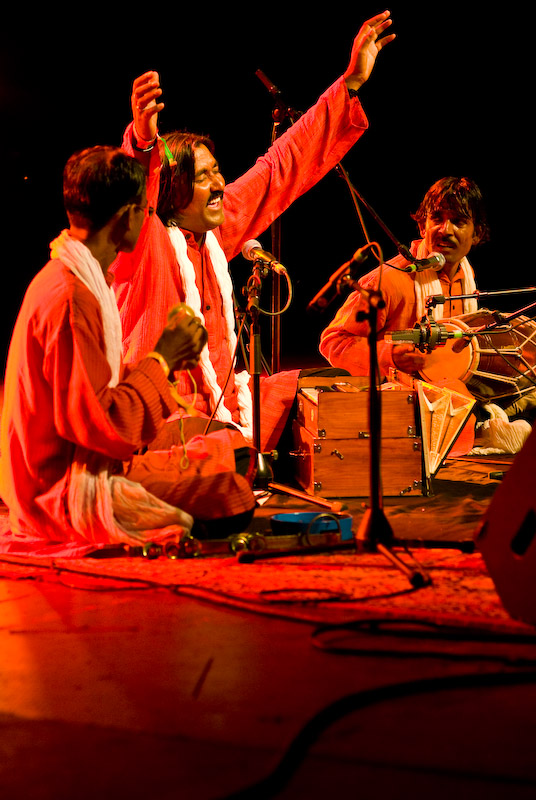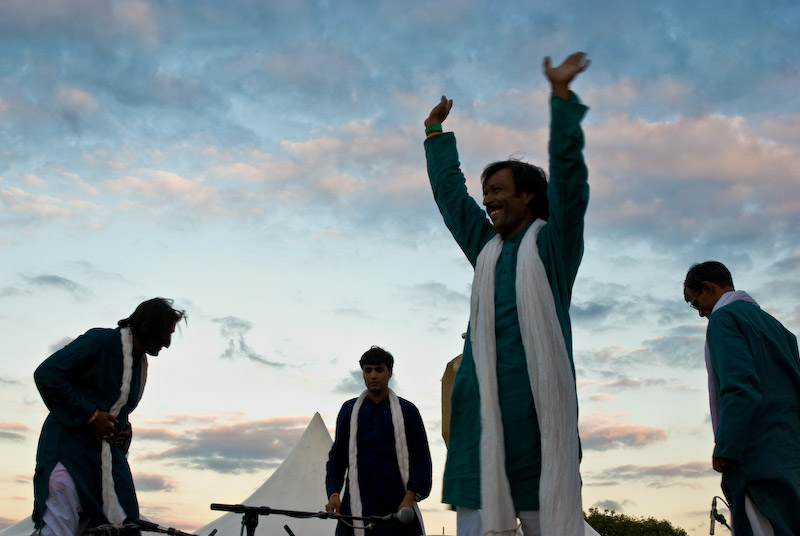But then I read about the HyperDrive ColorSpace. I never wanted the preview facilities - for me this kind of solution is just for storage - but this tool featured a few characteristics that made me wanting it very much. The most important one being the card recovery tools. I already have two SD cards with faulty sectors (one Sandisk Ultra II 2GB and one Sandisk Extreme III 2GB), so this seemed a great tool to me. I still have to test it. This report is a first glance review only.
Here's the beast:

Compared to the CompactDrive PD70x it's a tad smaller, well slimmer actually. It also looks nicer. No covers protecting the cardslots or buttons however. It comes with a nice pouch (neoprene by the looks of it, better than the one with the PD70x, but not dust proof), a relatively compact power adapter for charging the battery, a USB cable and a car charger. There's also a screw driver and two screws for mounting your own drive into the device. The specs can be found on the net easily so I won't list them all.
No AA-batteries in this one. The generic 18650 battery boasts a long life, which I couldn't verify yet. I did notice however that it doesn't have the drain the PD70x had with the AAs (much more than the normal drain of rechargeable AAs). This had me keep a piece of paper between the contacts and the batteries when the device was not in use. Having batteries that don't drain will make a big difference. Not having to take along the charger will too, but its being fairly small means I'll probably carry it along anyway just to be on the safe side...
Switching on the device is pretty straight forward (one button to push for 2 seconds, though I had the impression it switched on almost immediately, hope it doesn't do that in the bag).
Starting the back-up is immediate after switch-on if a card is already in there. By default you get a visual confirmation for every transferred image once it's on the drive, no verification however. That's great if you shoot JPGs and can visually check progress (nicely done with progress bar and remaining time estimate), but if you shoot RAW this only shows the embedded JPG, so it is still possible that the remainder of the file is not intact... Verification can be switched on, and visual check can be switched off to work faster. Alternatively you can also set the visual check to show the image that is being transferred, but then the device read it from the card, so this doesn't hold any value in terms of verification.
There are various speeds to choose from, each of which is tuned for different card speeds. The modes are named for the Sandisk line-up, i.e. Extreme, Ultra, ... I'm not sure yet what mode would be best if a variety of cards is used. Setting it for the slowest would seem best I guess...
Browsing the images requires going into the directory structure which I didn't find straight forward (same for browsing the menu's but that was slightly easier). All five buttons are assigned different functions on every screen and these are always shown on the botton line of the display, but I found I needed to check this every time before I could continue navigating. Perhaps I'll get the hang of it soon, but it wasn't really intuitive. Looking at the images can display the EXIF and a luminescence histogram (no RGB). Zooming in on them can be done once, and even then the quality of the zoomed-in image is not so great. The device can generate faster preview thumbnails, so perhaps these will be better quality. Though the browse function is nice to flip though the images, this does not seem a great way to check image quality in terms of focus.
Customizing the ColorSpace can be done extensively by putting specifically named bmp files in specifically named directories on the drive. If present, these will override the ones in the devices firmware. Since all buttons are bitmaps, this can be used to make the device talk another language. Perhaps we'll be able to download other language sets? Nice feature, though the one customization I really liked on the PD70x could not be found on the ColorSpace, i.e. the facility to include a file containing the directory naming prefix. This can be very handy to separate shoots without having to download the images everytime. The ColorSpace does not seem to have it, a shame...
Remains the feature I wanted the ColorSpace for. Its cards recovery tools. These allow for a check of the sectors of the card and marks the faulty sectors so they won't be used. I did the same on a faulty card from windows and that fixed the card for me until I formatted it again in-camera. The ColorSpace also has a formatting feature and it offers an option to remove all files from the card after a back-up is done. I am counting on this feature to allow me to recover my two corrupted cards so I won't be having to buy new ones to replace them. Though in all honesty I am lured by a 4GB SDHC card now that I have the choice...
I'm not sure yet what I'll do with the CompactDrive PD70x, but I guess that the HyperDrive ColorSpace will replace it. I might put it in a ziplock bag though, to keep the dust out...
hth, Wim


